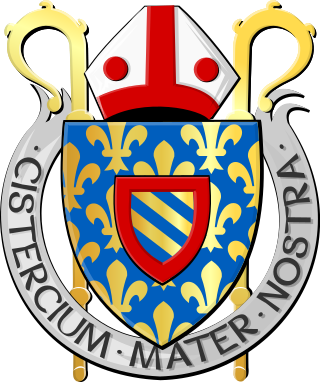
The Cistercians, officially the Order of Cistercians, are a Catholic religious order of monks and nuns that branched off from the Benedictines and follow the Rule of Saint Benedict, as well as the contributions of the highly-influential Bernard of Clairvaux, known as the Latin Rule. They are also known as Bernardines, after Saint Bernard himself, or as White Monks, in reference to the colour of the "cuculla" or cowl worn by the Cistercians over their habits, as opposed to the black cowl worn by Benedictines.

Dunbrody Abbey is a former Cistercian monastery in County Wexford, Ireland. The cross-shaped church was built in the 13th century, and the tower was added in the 15th century. With a length of 59m the church was one of the longest in Ireland. The visitor centre is run by the current Marquess of Donegall and has one of only two full sized hedge mazes in Ireland.

Malachy is an Irish saint who was Archbishop of Armagh, to whom were attributed several miracles and an alleged vision of 112 popes later attributed to the apocryphal Prophecy of the Popes.

Croom is a village in County Limerick, Ireland. It is located just off the N20 on the River Maigue. It is 8 km southeast of Adare on the N20. The village is in a townland and civil parish of the same name.

Thomond, also known as the kingdom of Limerick, was a kingdom of Gaelic Ireland, associated geographically with present-day County Clare and County Limerick, as well as parts of County Tipperary around Nenagh and its hinterland. The kingdom represented the core homeland of the Dál gCais people, although there were other Gaels in the area such as the Éile and Eóganachta, and even the Norse of Limerick. It existed from the collapse of the Kingdom of Munster in the 12th century as competition between the Ó Briain and the Mac Cárthaigh led to the schism between Thomond and Desmond. It continued to exist outside of the Anglo-Norman-controlled Lordship of Ireland until the 16th century.
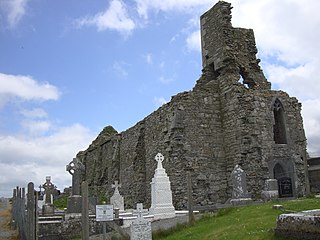
Abbeydorney Abbey, also known as Kyrie Eleison Abbey or Odorney was founded by the O Torna, chieftain of the region, in 1154 for the Cistercians from Monasteranenagh.
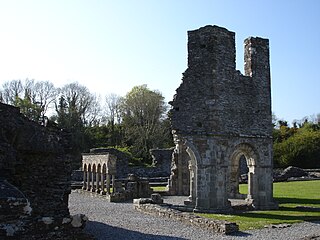
Mellifont Abbey, was a Cistercian abbey located close to Drogheda in County Louth, Ireland. It was the first abbey of the order to be built in Ireland. In 1152, it hosted the Synod of Kells-Mellifont. After its dissolution in 1539, the abbey became a private manor house. This saw the signing of the Treaty of Mellifont in 1603 and served as William of Orange's headquarters in 1690 during the Battle of the Boyne.
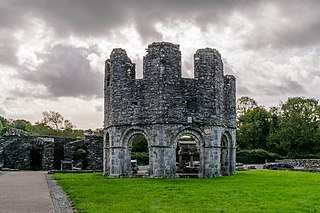
The Synod of Kells took place in 1152, under the presidency of Giovanni Cardinal Paparoni, and continued the process begun at the Synod of Ráth Breasail (1111) of reforming the Irish church. The sessions were divided between the abbeys of Kells and Mellifont, and in later times the synod has been called the Synod of Kells-Mellifont and the Synod of Mellifont-Kells.

Corcomroe Abbey is an early 13th-century Cistercian monastery located in the north of the Burren region of County Clare, Ireland, a few miles east of the village of Ballyvaughan in the Barony of Burren. It was once known as "St. Mary of the Fertile Rock", a reference to the Burren's fertile soil.

Boyle Abbey is a ruined Cistercian friary located in Boyle, County Roscommon, Ireland. It was founded by Saint Malachy in the 12th century.

Duiske Abbey National Monument, also known as Graiguenamanagh Abbey, is a 13th-century Cistercian monastery situated in Graiguenamanagh, County Kilkenny in Ireland.
Áed Ua hOissín was consecrated first Archbishop of Tuam in 1152 and died in 1161. He was closely associated with Connacht royalty, and had served as abbot of Tuam.
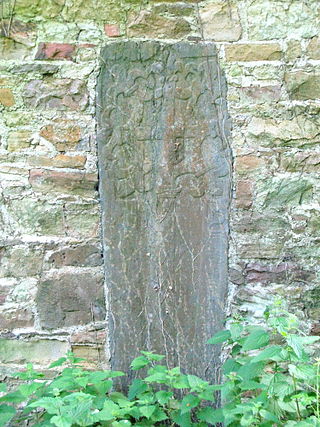
Inislounaght Abbey, also referred to as Innislounaght, Inislounacht and De Surio, was a 12th-century Cistercian settlement on the river Suir, near Clonmel in County Tipperary, Ireland. It was originally dedicated to the Blessed Virgin.

Knockmoy Abbey, also known as The Monastery of the Hill of Victory ; and as Porta Magna and Teampollandorusmoir after the dissolution of the monasteries, is a ruined Cistercian abbey located in Abbeyknockmoy, County Galway, Ireland. Founded in 1198, the abbey is known for its wall-paintings.

Croom or Crom Castle, also called the Castle of Crom, is a historic castle in the town of Croom, County Limerick, that is notable for its occupation as one of the principal residences of the Kildare branch of the FitzGerald dynasty. Their ancient war cry and motto "Crom a Boo", or in Irish "Crom Abú" or "Crom forever", comes from the strategic fortress. Before the FitzGeralds it was the site of an earlier fortress of the O'Donovans.
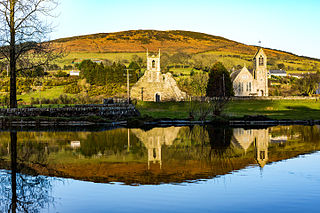
Baltinglass Abbey is a ruined medieval Cistercian abbey in Baltinglass, County Wicklow, Ireland. Founded by Diarmait Mac Murchada in 1148, the abbey was suppressed in 1536. It is today a National Monument.
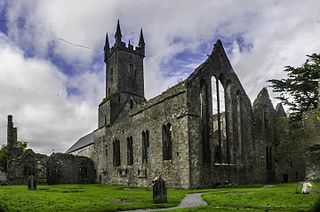
Ennis Friary was a Franciscan friary in the town of Ennis, County Clare, Ireland. It was established in the middle of the 13th century by the ruling O'Brien dynasty who supported it for most of its existence. Following the suppression of the monasteries in the 16th century, the friary continued to function for a while despite the loss of its lands. In the early 17th century, the buildings were handed over to the Church of Ireland as a place of worship. It was used as such until the late 19th century. After the construction of a new Church of Ireland building, the friary fell into ruin. Managed by the Office of Public Works since the late 19th century, it was formally returned to the Franciscan Order in 1969.

Mungret Abbey is a medieval friary and National Monument located near Mungret in County Limerick, Ireland.



















